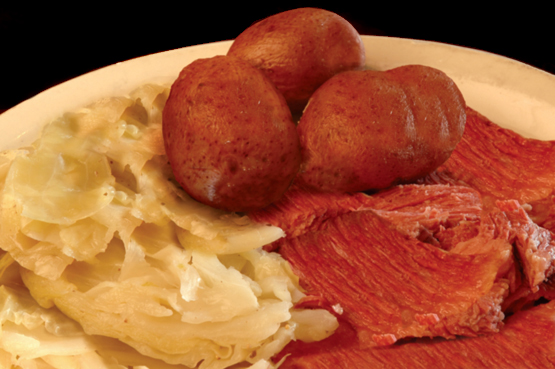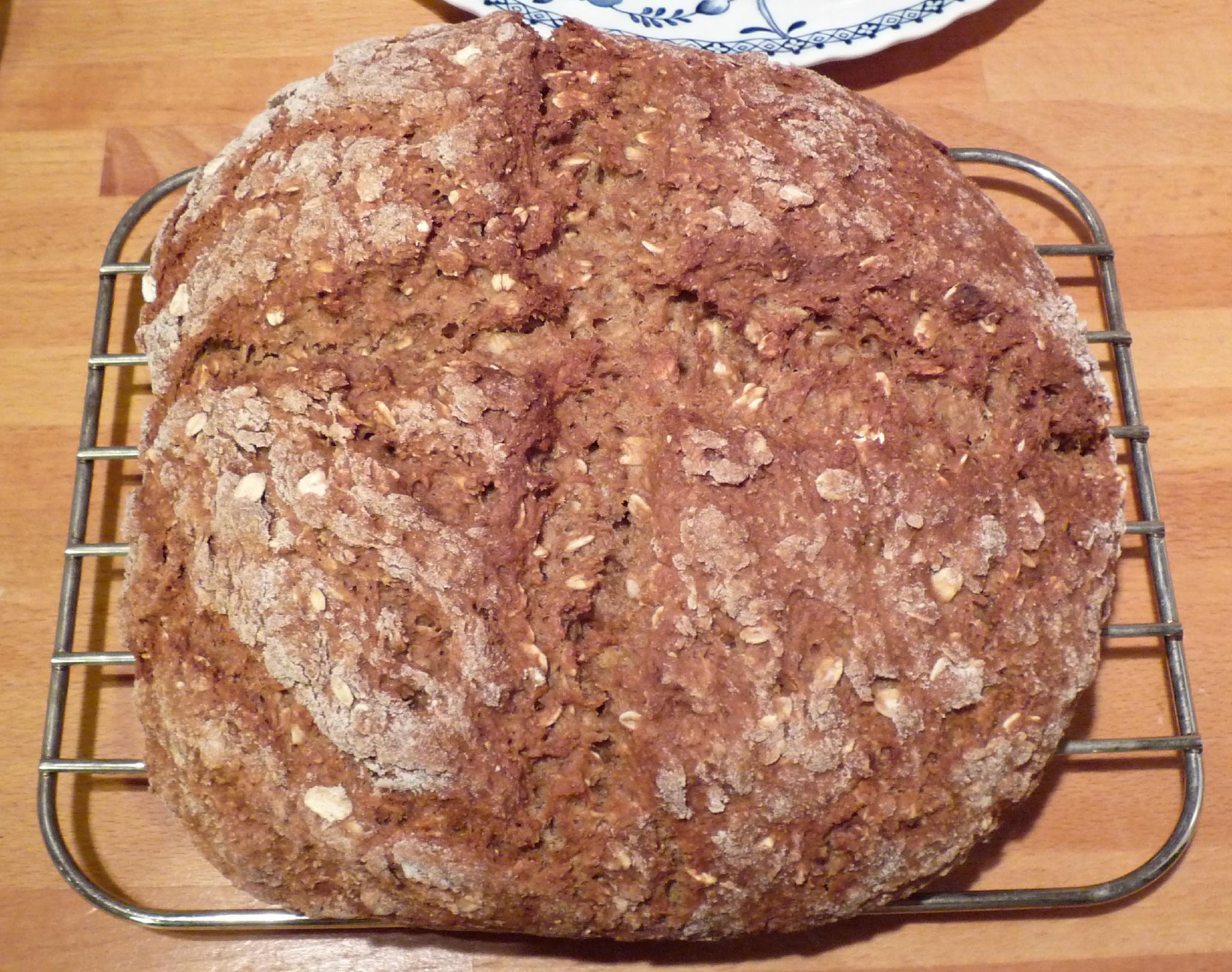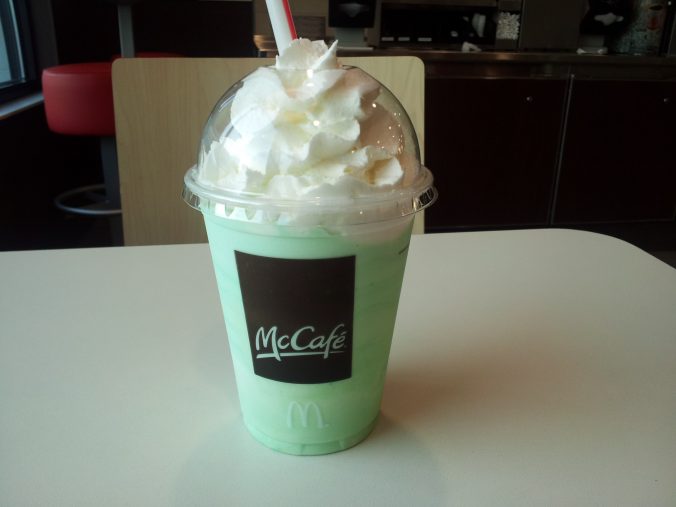By: Megan Dunlevy
The Shamrock Shake returns every March. For many people the annual return of McDonald’s Shamrock Shake means that St. Patrick’s Day is upon us. This mint-flavored shake started off as a charitable  promotion that started the first Ronald McDonald house. Since the introduction of the shake in 1970 there have been over 60 million sold and there is even a website (shamrockshake.com ) to find Shamrocks out of season. There are numerous examples of foods that are seen as Irish or are specific to St. Patrick’s Day, from artificial green beer, Irish soda bread, and potatoes to corned beef – the examples seem never ending. To many Irish Americans, including myself, corned beef, boiled potatoes and carrots is a classic St. Patrick’s Day meal and for bakers, Irish soda bread is equally traditional. But are these “traditional” foods actually Irish? Or have they simply become “Irish” over time? Clearly some foods like the Shamrock Shake and green beer are not traditional, but what about corned beef and Irish soda bread?
promotion that started the first Ronald McDonald house. Since the introduction of the shake in 1970 there have been over 60 million sold and there is even a website (shamrockshake.com ) to find Shamrocks out of season. There are numerous examples of foods that are seen as Irish or are specific to St. Patrick’s Day, from artificial green beer, Irish soda bread, and potatoes to corned beef – the examples seem never ending. To many Irish Americans, including myself, corned beef, boiled potatoes and carrots is a classic St. Patrick’s Day meal and for bakers, Irish soda bread is equally traditional. But are these “traditional” foods actually Irish? Or have they simply become “Irish” over time? Clearly some foods like the Shamrock Shake and green beer are not traditional, but what about corned beef and Irish soda bread?
 Corned beef is not Irish at all. Beef actually was not the diet of many Irish, save for the very rich, and until the British conquest of Ireland, cattle were, in fact, considered sacred. The British used Ireland to produce enough beef for their ever growing population. Corned beef at that time was very different than the corned beef we eat today. Corned beef got its name from the large corn kernel-shaped pieces of salt that were used to preserve the beef. Corned beef became a part of the Irish American diet when the Irish emigrated to the United States. In the States, beef was less expensive than back in Ireland so the new emigrants where able to afford it. Emigrants also had a hard time finding the “bacon” joint that was more traditional. Irish soda bread, on the other hand, is very traditional. Soda breads are typically favored by poorer countries as they require only the basic ingredients of flour, baking soda, soured milk, and salt. Baking of the bread was seen as one of the wife’s household duties and needed to be done every two or three days, as the bread is perishable. How the bread is made differs between the south and north of Ireland but most recipes call for baking the bread in a iron pot over an open flame and cutting a cross into the bread to ward off the devil and protect the household before baking. The recipe for soda bread was probably brought over with the emigrants as a part of their culture and as a link to their home country.
Corned beef is not Irish at all. Beef actually was not the diet of many Irish, save for the very rich, and until the British conquest of Ireland, cattle were, in fact, considered sacred. The British used Ireland to produce enough beef for their ever growing population. Corned beef at that time was very different than the corned beef we eat today. Corned beef got its name from the large corn kernel-shaped pieces of salt that were used to preserve the beef. Corned beef became a part of the Irish American diet when the Irish emigrated to the United States. In the States, beef was less expensive than back in Ireland so the new emigrants where able to afford it. Emigrants also had a hard time finding the “bacon” joint that was more traditional. Irish soda bread, on the other hand, is very traditional. Soda breads are typically favored by poorer countries as they require only the basic ingredients of flour, baking soda, soured milk, and salt. Baking of the bread was seen as one of the wife’s household duties and needed to be done every two or three days, as the bread is perishable. How the bread is made differs between the south and north of Ireland but most recipes call for baking the bread in a iron pot over an open flame and cutting a cross into the bread to ward off the devil and protect the household before baking. The recipe for soda bread was probably brought over with the emigrants as a part of their culture and as a link to their home country.
References:
http://www.abigailsbakery.com/bread-recipes/history-of-irish-soda-bread.htm
http://www.smithsonianmag.com/arts-culture/is-corned-beef-really-irish-2839144/
http://www.irishcentral.com/culture/food-drink/why-do-irish-americans-eat-corned-beef-and-cabbage-instead-of-bacon-for-st-patricks-day-196470851-237570541
http://www.huffingtonpost.com/2014/03/14/shamrock-shake-information_n_4916266.html
